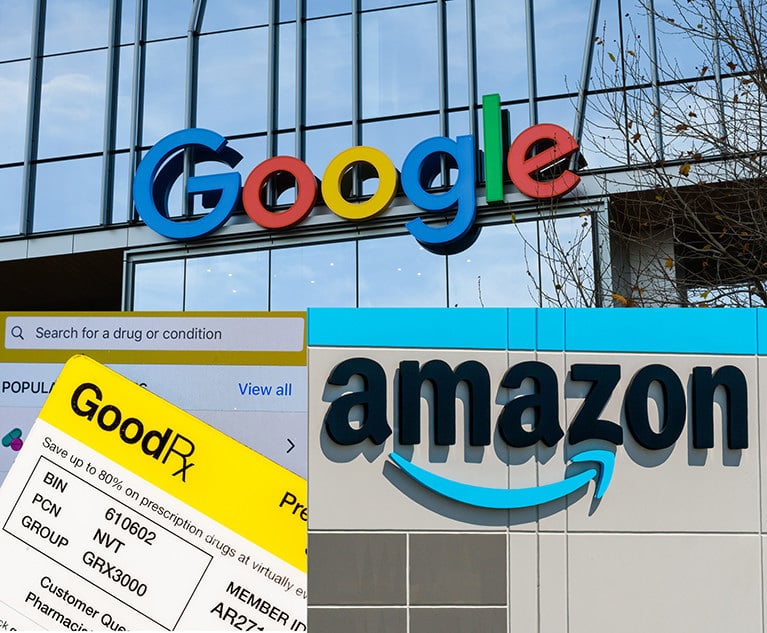Is Products Liability Closing In on Amazon?
In his Complex Litigation column, Michael Hoenig writes: Three decisions in July have ignited a potential firestorm of products liability exposure perhaps wider than the jurisdictions involved in the cases. Given Amazon’s huge product line, the numbers of purchasers and users, the diversity of the many third-party vendors, and the policy reasons articulated by these courts, it is likely that a flood of lawsuits lies ahead.
August 09, 2019 at 01:00 PM
10 minute read
 Michael Hoenig
Michael Hoenig
The July 4th celebrations notably include bedazzling fireworks displays. This year, however, there also were legal fireworks of a sort in and around July 4th. On July 3, the U.S. Court of Appeals for the Third Circuit held that Amazon could be subjected to strict products liability for defective goods that cause injury or damage. Oberdorf v. Amazon.com, 2019 U.S. App. LEXIS 19982 (3d Cir. July 3, 2019). Then, on July 5, the Sixth Circuit held that Amazon could be liable for damage and injuries caused by failure to warn the consumer about dangers of the product. Fox v. Amazon.com, 2019 U.S. App. LEXIS 20043 (6th Cir. July 5, 2019).
Why are these decisions in the nature of legal fireworks? Because, as we shall see, Amazon does not fit cleanly into the niche of being a “seller” of products—a usual requirement for strict tort liability to attach. Indeed, only a month or so earlier, the Fourth Circuit ruled that Amazon was not a “seller” subject to strict tort liability. Erie Ins. Co. v. Amazon.com, 2019 WL 2195146 (4th Cir. May 22, 2019). Indeed, in a number of prior litigations, Amazon had similarly prevailed. Yet, in late July, a federal district court in Wisconsin held that Amazon can be strictly liable for defective products sold by its marketplace vendors. State Farm Fire & Casualty Co. v. Amazon.com, 2019 WL 3304887 (W.D. Wis. July 23, 2019).
If Amazon can be sued in strict products liability for products sold from its marketplace, that would be a big deal. The economic realities show why. As described in Oberdorf, Amazon is the world’s most valuable retail company. Its website is an online marketplace where Amazon retails its own products as well as those of more than one million “third-party vendors.” These vendors decide which products to sell, the means of shipping and product pricing. Amazon lists the products on its Amazon Marketplace, collects order information from consumers and processes payments. In exchange for these services, Amazon collects fees from each third-party vendor (really, the traditional “seller” but using Amazon’s Marketplace).
In order to use Amazon’s services, the seller must agree to Amazon’s Services Business Solutions Agreement, which governs every step of the sales process. The vendor chooses which products it would like to sell by using Amazon’s website. (Amazon, however, excepts products that are illegal, sexually explicit, defamatory or obscene). Based on information provided by the vendor, Amazon formats the product’s listing on its website, retaining lots of control over the content, design and appearance of the items for sale.
Amazon also offers a number of services such as “Fulfillment by Amazon,” in which it takes physical possession of the vendors’ products and ships them to customers. Otherwise, the seller itself is responsible for shipping products directly to consumers. Amazon gets two types of fees for its services: a commission, typically between seven and fifteen percent of the overall sales price; or a per item or a monthly fee. Amazon pays all collected sales proceeds to the vendor, minus fees. Amazon’s Marketplace has grown enormously in recent years. Over a million businesses of all sizes sell products. Indeed, small and medium-sized businesses now account for 58 percent of Amazon sales. Oberdorf, LEXIS at *30-*31, dissenting opinion.
Also at play potentially is a federal statute, the Communications Decency Act (CDA), 17 U.S.C. §230, which limits the liability of a website’s publisher for content posted by third parties. The CDA safe harbor provision was passed by Congress in the wake of a controversial New York state court decision allowing defamation claims to proceed against a website host. So, for example, representations, warnings, cautions or other messages to consumers posted by the vendors on Amazon’s website arguably should not be Amazon’s responsibility.
The CDA defense argument would be that negligence and strict liability claims should be barred because they seek to treat Amazon as the publisher or speaker of material provided by the real sellers (the vendors). As noted in Oberdorf, LEXIS at *24-*26, courts throughout the country have interpreted the CDA safe harbor provision broadly. Let’s just say here that it is an advocative factor to be reckoned with, depending on the facts and the claims actually being made about the defective products and warnings claims.
Dog Leash
In Oberdorf, plaintiff purchased a retractable dog leash and took the dog for a walk. Unexpectedly, the dog lunged, causing the D-ring or the collar to break and the leash to recoil back and hit Oberdorf’s face and sunglasses. As a result, she is permanently blind in her left eye. The collar was purchased on Amazon.com when plaintiff logged onto Amazon’s website, typed search information on dog collars and decided on the product. The vendor was an entity called “The Furry Gang” but, at the time of suit, Oberdorf was unable to locate a representative, as The Furry Gang did not have an active account on Amazon since May 2016. Plaintiff’s claims included strict product liability for defective design; failure to warn adequately regarding use of the dog collar; and a variety of negligence theories. Oberdorf, LEXIS at *7-*8. Though filed in federal court, Pennsylvania strict products liability law applied.
The district court granted Amazon summary judgment since it was not a “seller” within the meaning of Pennsylvania law and, second, since the CDA statute barred liability for its role as the online publisher of a third-party’s content. On appeal, the Third Circuit, in a 2-1 divided ruling, reversed applying a Pennsylvania four-factor test whether an actor is a “seller”. The factors are: (1) is the actor the “only member of the marketing chain available to the injured plaintiff for redress”; (2) whether imposition of strict liability on the actor “serves as an incentive to safety”; (3) whether the actor is in a “better position than the consumer” to prevent the circulation of defective products; and (4) whether the actor can distribute the cost of compensating for injuries resulting from the defects by charging for it in his business, i.e., by adjustment of the terms. Oberdorf, LEXIS at *11 (citing the Pennsylvania Musser decision involving suit against an auction house where a tractor was purchased).
After substantial discussion of each factor, as applied to this case, the circuit court majority concluded that (1) “Amazon now stands as the only member of the marketing chain available to the injured plaintiff for redress”; (2) Amazon is “fully capable, in its sole discretion, of removing unsafe products from its website,” and strict liability would be an incentive to do so; (3) Amazon is in a better position to prevent circulation of defective products; and (4) Amazon can distribute the cost of compensating victims of the defective products it handles. Amazon not only accepts orders and arranges for product shipments. It also “exerts substantial market control over product sales by restricting product pricing, customer service and communications with customers.” Therefore, it is not necessary that Amazon actually take title to the product for imposition of strict tort liability.
With respect to the safe harbor provision of the CDA statute, the circuit majority distinguished between claims made against Amazon’s role as an actor in the sales process (not precluded by the CDA) and Amazon’s alleged failure to provide or to edit adequate warnings regarding the dog collar (barred by the CDA). Further, design and failure-to-test claims are not barred by the CDA. Oberdorf, LEXIS at *27-*28. The dissenting judge would find that Amazon Marketplace is not a “seller”.
Hoverboards
In the Fox case, the Sixth Circuit analyzed Tennessee’s product liability statute and case law. Plaintiff ordered online a hoverboard with an “original Samsung advanced battery pack.” She paid the purchase price to Amazon and the receipt was sent from Amazon.com to her email address. The hoverboard was shipped from China via Federal Express but arrived in an Amazon-labeled box with Amazon’s Standard Identification Number. Defendant had Amazon Fulfillment Centers in China.
In January 2016, a child played with the hoverboard and left it on the first floor of his home. When the parents returned, the home was on fire. The children had to jump from the windows. It is undisputed that the fire was caused by the lithium-ion battery in the hoverboard. In November 2015, Amazon investigated news reports of hoverboard fires and explosions. Seventeen complaints concerned hoverboard fires or explosions involving those purchased on Amazon’s Marketplace. In December, defendant ceased all hoverboard sales worldwide. At that time, some 250,000 hoverboards had been sold by Amazon in the previous 30 days. Approximately, 25% of those had not yet been delivered.
In December, Amazon sent an email to purchasers, as described in Fox, LEXIS at *7-*8. Plaintiff did not recall receiving or reading the email. She testified that she would not have let the hoverboard enter or remain in her home had she known there had been 17 complaints of fires or explosions in the United States. The district court dismissed the claims. However, the Sixth Circuit reversed. It concluded that Amazon was a “seller” within Tennessee law. It also held that, given the emails Amazon sent warning of dangers, “Defendant assumed a duty to warn Plaintiff … of the dangers posed by the hoverboard.” Having assumed a duty to act, there were genuine issues of material fact regarding whether Amazon breached that duty and whether any breach caused plaintiffs physical harm. These genuine disputes of fact preclude the dismissal of the suit. Nevertheless, the circuit court upheld the dismissal of the Tennessee Consumer Protection Statute, prohibiting unfair or deceptive trade practices, since there was insufficient evidence of a causal link.
In State Farm Fire & Casualty Co. v. Amazon.com, 2019 WL 3304887 (W.D. Wis. July 23, 2019), the product was an allegedly defective bathtub faucet adaptor, causing a household flood. The district court held that Amazon is “an integral part of the chain of distribution, an entity well-positioned to allocate the risks of defective products to the participants in the chain.” Indeed, Amazon provided “the only conduit between … the Chinese seller, and the American marketplace. Without Amazon, XMJ products would not be available at all in Wisconsin.” The only thing Amazon did not do was to take ownership of the Chinese seller’s goods—what the court called a mere technicality. In essence, said the federal judge, Amazon otherwise serves all the traditional functions of both retail seller and wholesale distributor. Hence, it could be liable under Wisconsin’s law.
Conclusion
Three decisions in July have ignited a potential firestorm of products liability exposure perhaps wider than the jurisdictions involved in the cases. Given Amazon’s huge product line, the numbers of purchasers and users, the diversity of the many third-party vendors, and the policy reasons articulated by these courts, it is likely that a flood of lawsuits lies ahead. As always, the actual facts are crucial and the adroit structuring of claims and defenses is paramount. Counsel can’t take it easy on this battlefront.
Michael Hoenig is a member of Herzfeld & Rubin.
This content has been archived. It is available through our partners, LexisNexis® and Bloomberg Law.
To view this content, please continue to their sites.
Not a Lexis Subscriber?
Subscribe Now
Not a Bloomberg Law Subscriber?
Subscribe Now
NOT FOR REPRINT
© 2025 ALM Global, LLC, All Rights Reserved. Request academic re-use from www.copyright.com. All other uses, submit a request to [email protected]. For more information visit Asset & Logo Licensing.
You Might Like
View All
Big Tech and Internet Companies Slammed With Consumer Class Actions in December

Court of Appeals Holds that Arbitration Agreements Can Be Formed Through ‘Clickwrap’ Process
8 minute read
FTC's New 'Click To Cancel' Rule Is Here, But Will It Survive Judicial Challenge?
9 minute read
Etsy Welcomed Aboard Ex-Facebook GC Colin Stretch With Baskets of Stock
2 minute readTrending Stories
Who Got The Work
J. Brugh Lower of Gibbons has entered an appearance for industrial equipment supplier Devco Corporation in a pending trademark infringement lawsuit. The suit, accusing the defendant of selling knock-off Graco products, was filed Dec. 18 in New Jersey District Court by Rivkin Radler on behalf of Graco Inc. and Graco Minnesota. The case, assigned to U.S. District Judge Zahid N. Quraishi, is 3:24-cv-11294, Graco Inc. et al v. Devco Corporation.
Who Got The Work
Rebecca Maller-Stein and Kent A. Yalowitz of Arnold & Porter Kaye Scholer have entered their appearances for Hanaco Venture Capital and its executives, Lior Prosor and David Frankel, in a pending securities lawsuit. The action, filed on Dec. 24 in New York Southern District Court by Zell, Aron & Co. on behalf of Goldeneye Advisors, accuses the defendants of negligently and fraudulently managing the plaintiff's $1 million investment. The case, assigned to U.S. District Judge Vernon S. Broderick, is 1:24-cv-09918, Goldeneye Advisors, LLC v. Hanaco Venture Capital, Ltd. et al.
Who Got The Work
Attorneys from A&O Shearman has stepped in as defense counsel for Toronto-Dominion Bank and other defendants in a pending securities class action. The suit, filed Dec. 11 in New York Southern District Court by Bleichmar Fonti & Auld, accuses the defendants of concealing the bank's 'pervasive' deficiencies in regards to its compliance with the Bank Secrecy Act and the quality of its anti-money laundering controls. The case, assigned to U.S. District Judge Arun Subramanian, is 1:24-cv-09445, Gonzalez v. The Toronto-Dominion Bank et al.
Who Got The Work
Crown Castle International, a Pennsylvania company providing shared communications infrastructure, has turned to Luke D. Wolf of Gordon Rees Scully Mansukhani to fend off a pending breach-of-contract lawsuit. The court action, filed Nov. 25 in Michigan Eastern District Court by Hooper Hathaway PC on behalf of The Town Residences LLC, accuses Crown Castle of failing to transfer approximately $30,000 in utility payments from T-Mobile in breach of a roof-top lease and assignment agreement. The case, assigned to U.S. District Judge Susan K. Declercq, is 2:24-cv-13131, The Town Residences LLC v. T-Mobile US, Inc. et al.
Who Got The Work
Wilfred P. Coronato and Daniel M. Schwartz of McCarter & English have stepped in as defense counsel to Electrolux Home Products Inc. in a pending product liability lawsuit. The court action, filed Nov. 26 in New York Eastern District Court by Poulos Lopiccolo PC and Nagel Rice LLP on behalf of David Stern, alleges that the defendant's refrigerators’ drawers and shelving repeatedly break and fall apart within months after purchase. The case, assigned to U.S. District Judge Joan M. Azrack, is 2:24-cv-08204, Stern v. Electrolux Home Products, Inc.
Featured Firms
Law Offices of Gary Martin Hays & Associates, P.C.
(470) 294-1674
Law Offices of Mark E. Salomone
(857) 444-6468
Smith & Hassler
(713) 739-1250






